- PDP8 and solar projects at Tri An.
- Solar irradiation and deployment models: ground-mounted farms and rooftop PV.
- Operational status and payment bottlenecks for rooftop solar.
- Transmission grid, substations and capacity evacuation constraints.
- Mechanisms: auctions, FIT, renewable DPPA; land-use and environmental planning.
Dong Nai’s solar power roadmap for 2023–2025 is guided by Power Development Plan VIII (Decision 500/QD-TTg), recognizing two Tri An projects totaling about 1,029 MW under a self-generation and self-consumption model. The province enjoys high solar irradiation, suitable for both ground-mounted facilities and rooftop PV, yet payment issues arise due to land-use planning. Transmission infrastructure requires upgrades to evacuate capacity, while pricing shifts toward competitive auctions and accelerates the renewable DPPA direction. Prioritizing land and environmental planning remains central to enable synchronized rollout.
PDP8 and solar projects at Tri An.
PDP8 and solar projects at Tri An.
Dong Nai’s solar plan is steered by PDP8 (Decision 500/QD-TTg, 15/5/2023), which identifies two Tri An solar projects with a combined capacity near 1,029 MW: about 928 MW linked to the Tri An hydropower plant and roughly 101 MW not yet in operation, all oriented to self-generation and self-consumption. Nationally, solar is expected to add around 4,100 MW by 2030 and grow to 168–189 GW by 2050, opening regional connection headroom for Dong Nai. The province also records three additional large-scale renewable projects, mostly solar, aligned with provincial and MOIT planning. As a result, Dong Nai’s solar planning should closely track interconnection near Tri An hydropower and stay compatible with PDP8 updates on sources and grid to optimize capacity allocation and stable operations.
Overall orientation and Tri An’s role in the national picture
PDP8 sets the national roadmap for renewables with a 2050 target of approximately 67.5–71.5% renewable share (including solar). By 2030, the plan envisions two interregional renewable industry–service hubs, creating momentum for Dong Nai solar connected to the Southern region. Within this structure, Tri An solar is positioned as a key component, coordinating closely with Tri An hydropower to maintain real-time system balance.
Project scale and source–grid coordination at Tri An
In Tri An (Dong Nai), total solar capacity is about 1,029 MW, of which roughly 928 MW operates in a configuration linked with Tri An hydropower and around 101 MW remains non-operational. This scale requires coordinated operations: solar output follows daytime irradiation while hydropower provides frequency control, voltage support and reactive compensation as solar production fluctuates. The synergy improves supply reliability and leverages existing transmission corridors around Tri An.
- Role of Tri An Hydropower: delivers fast frequency response (PFR) and slower frequency restoration (FRR), supports voltage control and reactive power to stabilize the area as Tri An solar output varies.
- Grid compatibility: the system needs an interconnection configuration meeting technical standards to reliably evacuate capacity for existing and upcoming plants.
Transmission infrastructure and investment nodes under PDP8
PDP8 prioritizes strengthening the Dong Nai–Tri An transmission backbone, especially 220 kV and above, to enhance connectivity between solar sources and the national grid. Coordinated investment in sources and grid mitigates local overload risk, keeps operations safe–stable, and ensures flexible dispatch between hydro and solar. As Dong Nai expands solar, optimizing interconnection at appropriate voltage levels is essential for sustainable evacuation.
Self-generation/self-consumption and flexible interconnection
PDP8 strongly encourages self-generation/self-consumption for households and businesses, targeting more than 50% of buildings capable of self-supplying with solar. At Tri An, this reduces stress on the main grid and enables flexible interconnection among distributed solar clusters and the area network. For factories and industrial parks in Dong Nai, self-gen/self-consumption coordinated with Tri An hydropower helps smooth grid injections, improving forecastability and internal load stability.
Technical constraints and compliance
PDP8’s technical frame requires the N-1 principle across transmission and distribution so the system remains safe if one element fails. Plants must implement active power control to avoid overloading the grid and comply with national standards on smart, secure, and stable grids. For Tri An solar, flexible controls and coordinated supply–demand with Tri An hydro (frequency/voltage control, PFR/FRR) are core to design and operation.
Regional connectivity and dispatch
Tri An anchors Southern regional connectivity to the national system, where Tri An hydropower acts as the rhythm keeper for frequency and voltage, absorbing fluctuations from Dong Nai solar. This advantage boosts real-time supply reliability, eases pressure on 220 kV corridors and above, and preserves room for solar expansion while maintaining voltage and frequency quality.
Adding renewable capacity in Dong Nai and deployment implications
Planning records additional large-scale renewable projects in Dong Nai (mostly solar) with capacity potentially exceeding 1,000 MW, matching local potential. This demands synchronized grid interconnection planning, optimized connection points, substation/line configurations, and dispatch mechanisms with nearby hydropower to ensure stable evacuation across the load range.
Implementation timeline and investment priorities
After PDP8 approval (15/5/2023), MOIT issued detailed implementation plans, prioritizing projects with strong economics that bolster energy security. Focus areas include co-developing solar with hydropower and investing in transmission at key nodes such as Dong Nai–Tri An. Delayed projects are reviewed and flexibly adjusted under an open-planning approach to safeguard overall system balance and national investment efficiency.
Action pointers for businesses in Tri An – Dong Nai
- Build source–grid plans aligned with PDP8, prioritizing self-generation/self-consumption to reduce reliance on the central grid and improve operational flexibility.
- Coordinate closely with Tri An Hydropower in dispatch scenarios, ensuring capability to meet PFR/FRR and voltage control requirements as solar output varies.
- Evaluate interconnection options at suitable voltage levels, comply with N-1 and active power control to avoid local overload.
Technical focus summary
Tri An solar expands under PDP8 with coordinated source–grid development and joint dispatch with Tri An Hydropower. Priorities include upgrading 220 kV and above, scaling self-generation/self-consumption, enforcing N-1 and grid standards, and enabling flexible interconnection. These are the prerequisites for Dong Nai to harness its solar potential while operating stably under the plan.
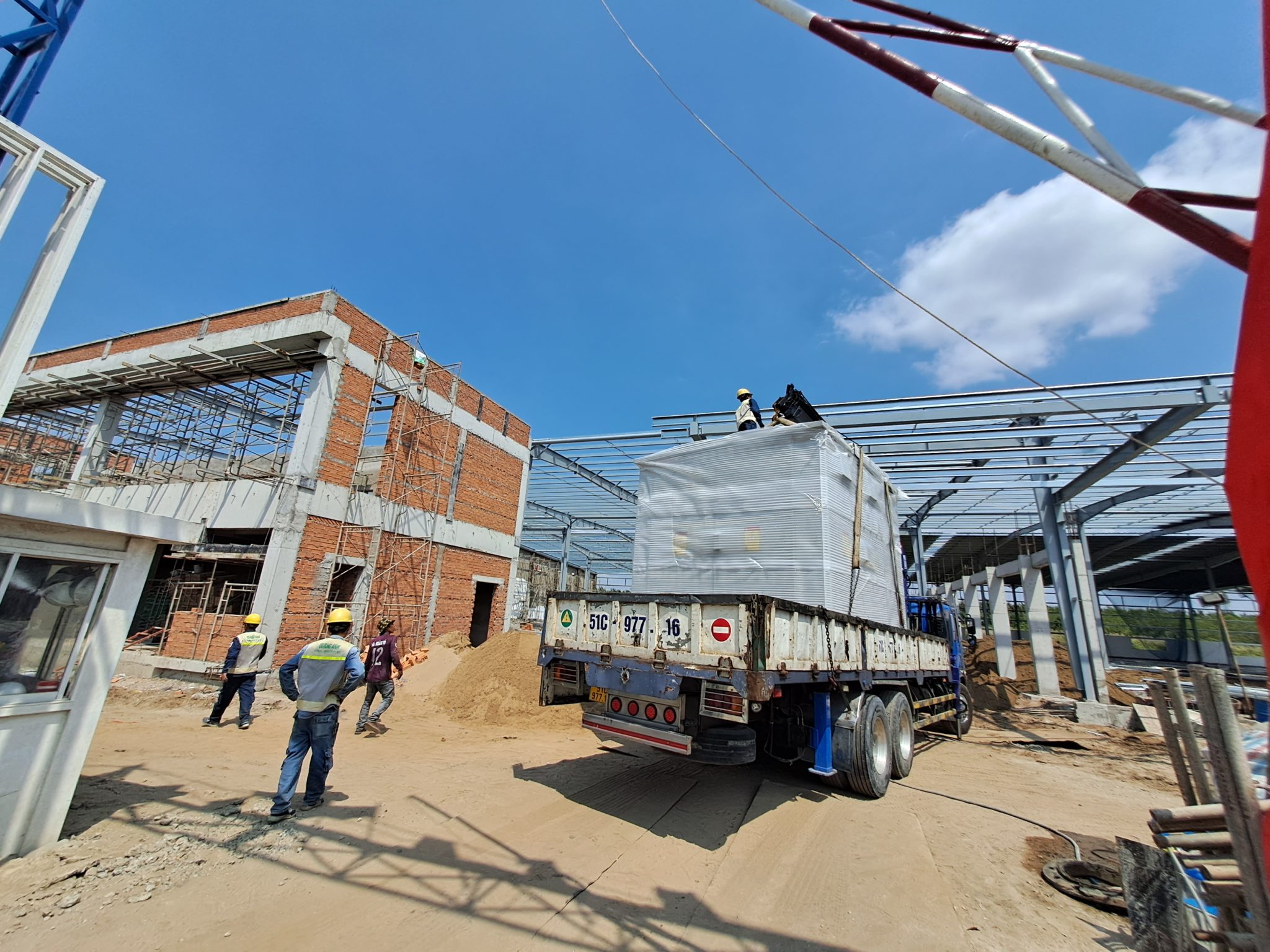
Solar irradiation and deployment models: ground-mounted farms and rooftop PV.
Dong Nai’s solar plan is underpinned by strong Southern irradiation, enabling both ground-mounted projects and rooftop solar across the province. Beyond large-scale solar farms, there are numerous rooftop models, notably in Long Khanh City with single projects approaching 1 MW (e.g., an agricultural farm in Bao Quang). The irradiation advantage shortens the time to reach design yield and enhances performance when paired with self-generation/self-consumption. To unlock potential, Dong Nai’s solar planning should align connection points with the hydropower area and the existing grid, creating space for Tri An solar and rooftop models to expand under a suitable legal framework.
Dong Nai’s solar resource is favorable for both rooftop and ground-mounted systems, with global horizontal irradiation around 1.7–1.9 thousand kWh/m²/year and average sunshine hours near 2.4 thousand hours/year [1]. These translate to about 5 kWh/m²/day in favorable months, supporting stable annual output.
Irradiation conditions and seasonal variability
- Regional comparison: the South averages around 5.9 kWh/m²/day, significantly higher than the North (3.69 kWh/m²/day) [3][7]. In Southeast provinces like Binh Duong, HCMC, and Can Tho, irradiation ranges 4.5–5.7 kWh/m²/day in summer and 2.2–3.2 kWh/m²/day in winter [4].
- Reference point in the region: Nha Trang (Khanh Hoa) reaches roughly 5.815 kWh/m²/day across eight months [3][5], reflecting the high potential of the South-Central coast compared with the regional average.
- Sunshine cycles: the longest sunshine months often fall in January, March, and April (from 7:00 to 17:00) [5][6], favoring extended generation windows.
- Local factors: cloud cover and atmospheric layers cause intra-regional differences, requiring design calibration and production forecasting [3].
Development targets under PDP8
For 2023–2030, PDP8 allocates 229 MW of additional solar capacity to Dong Nai—among the higher allocations across provinces [1]. Nationally, added solar capacity in this period totals about 2.6 GW, underscoring the current focus on Southern renewables [1]. This allocation fits Dong Nai’s solar resource and creates room for both rooftop and ground-mounted growth, aligned with local load needs.
Enabling infrastructure
- Industrial roof stock: more than 7,000 ha of factory rooftops in industrial parks provide the physical base to scale rooftop PV, complemented by roofs in clusters, farms, public offices, and homes [1].
- Transmission lines: multiple 500 kV and 220 kV backbones traverse the province [1], favorable for 220/500 kV interconnections and capacity evacuation when connecting to the national grid.
Deployment implications for Dong Nai
- Industrial rooftop voltage levels: leverage extensive roof stock to deploy rooftop PV, capturing high sunshine hours to serve production loads under self-generation/self-consumption.
- Ground-mounted projects: with 500/220 kV corridors crossing the area, solar farms benefit from evacuation routes when sited in step with existing infrastructure.
- Seasonal operations: long-sunshine months allow optimized maintenance scheduling, while variability from clouds/atmosphere requires updated irradiation forecasts for proactive internal dispatch.
In short, Dong Nai’s irradiation, PDP8 targets, and current grid strength form the pillars for expanding both rooftop and ground-mounted solar on a feasible investment path.
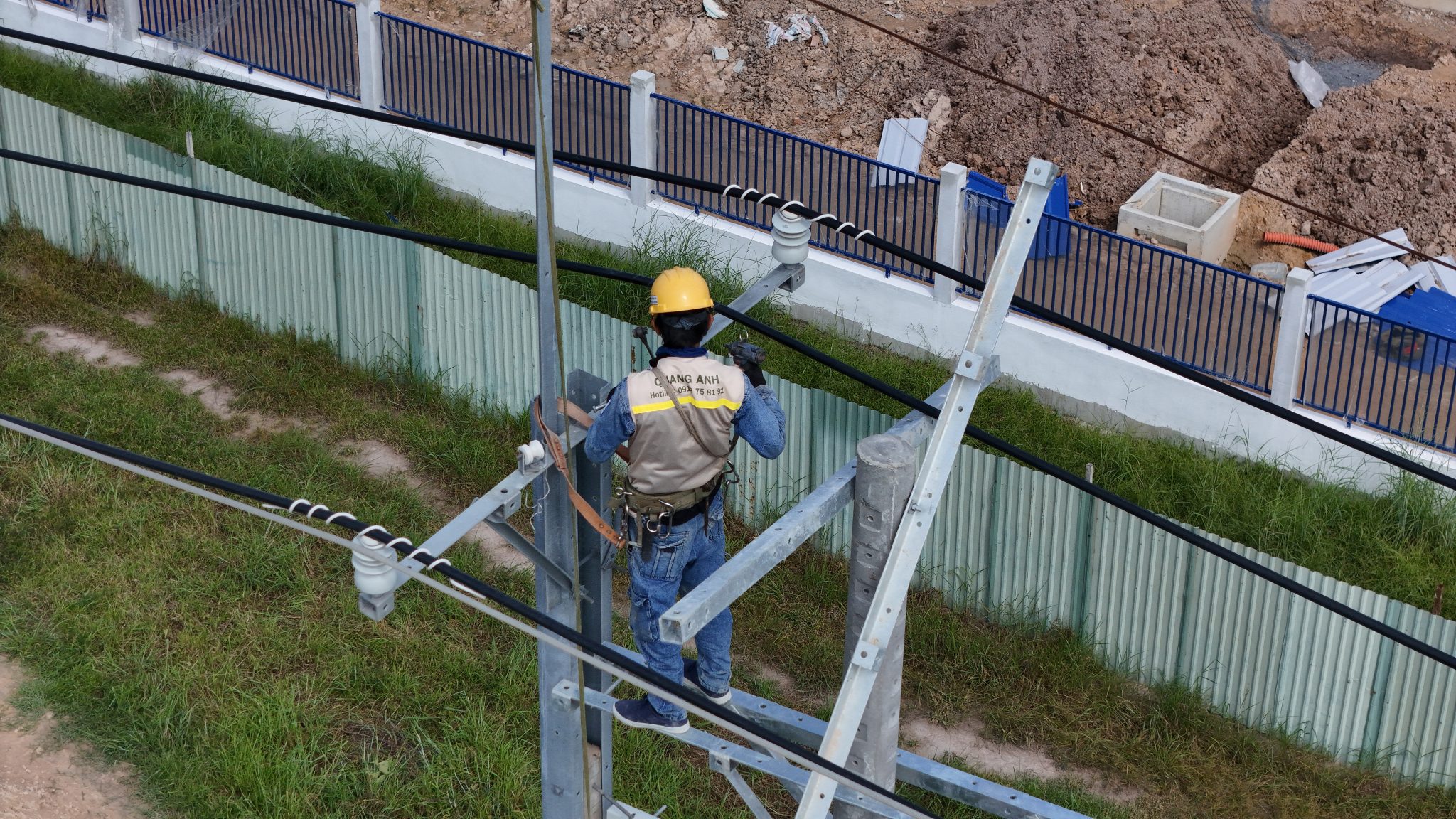
Operational status and payment bottlenecks for rooftop solar.
Operational status and payment bottlenecks for rooftop solar.
Dong Nai hosts a sizable number of rooftop systems, yet payments have stalled where projects no longer match current land-use plans, triggering temporary suspension of interconnection and payouts. This is a key operational bottleneck for rooftop solar in Dong Nai, requiring a reassessment of land-use conformity and updates aligned with local plans. For large projects interconnecting via Tri An hydropower, actual operating capacity by 2023 remains incomplete as they are still in preparation. Thus, Dong Nai’s solar plan should prioritize land procedures and interconnection to unblock existing projects and ensure legal compliance when adding new capacity.
System status and operating characteristics
Dong Nai features diverse rooftop PV systems, with households and small businesses making up the majority. Residential grid-tied systems are often below 10 kWp; no building permit is required, but notification to the utility is needed if exporting surplus to the grid. This distributed capacity calls for alignment between land-use planning and grid interconnection to ensure transparent metering and settlement.
PPA and FIT obstacles for solar
- Payments have been paused or interrupted in cases where projects were found misaligned with land-use plans at inspection, directly affecting investor entitlements.
- From around 2020, new connections faced suspension or curtailment due to grid congestion and source–load mismatches, making solar PPAs difficult to sign and execute.
- Applicable legal provisions for power purchase contracts have lacked consistency among stakeholders, prolonging negotiations and documentation. In this context, maintaining the solar FIT mechanism steadily during its effective period is important for market confidence.
Land-law framework and defining “rooftop”
- Determining the intended use and updating land-use plans in Dong Nai is fundamental when installing systems on building roofs. Local implementation follows central guidelines to ensure consistent application.
- The definition of “rooftop” lacks a uniform standard, prompting debate on allowable installation areas across roof types (metal, concrete, tile; new or existing). This directly affects PPA documentation and interconnection approval.
Central directives and local orientation
- Document 7088/BCT-ĐL (22/9/2020) from MOIT provides detailed guidance on rooftop PV development, including grid interconnection, settlement mechanisms, and utility responsibilities.
- Decision 13/2020/QD-TTg and Decree 135/2024/ND-CP establish the legal base for implementation, underpinning solar PPAs and FIT application during the respective periods.
- Dong Nai plans to promote efficient energy use with a focus on rooftop solar through 2025, integrating land-use requirements with practical investment timelines.
Planning, interconnection, and links with Tri An hydropower
- Regional power planning is reviewed to address interconnection bottlenecks and source balancing, including coordination between solar and Tri An hydropower to optimize local infrastructure.
- Policies to enhance bidirectional interconnection go hand-in-hand with accurate metering by the local utility, enabling transparent accounting of self-consumption versus grid exports.
Metering, settlement, and the post-FIT requirement set
- Utility-installed and verified bi-directional meters (EVN) provide the technical basis to quantify self-consumed and exported energy for solar PPA settlements.
- Payments are usually processed monthly via bank transfer; invoicing differs between households and businesses but relies on validated meter data.
- The solar FIT mechanism currently applies through 2040 at a fixed tariff; beyond that, follow-on regulations are needed to preserve market continuity and investment momentum for rooftop PV.
Key pain points and near-term priorities
- Focus areas include standardizing the rooftop definition, completing land-use planning, and upgrading infrastructure to prevent renewed interconnection suspensions.
- Investment in distribution grids and metering must scale with rooftop growth, enabling stable signing and execution of solar PPAs.
- Continuing to update the framework beyond the FIT period will keep the market predictable and reduce operational and settlement risks for rooftop projects.
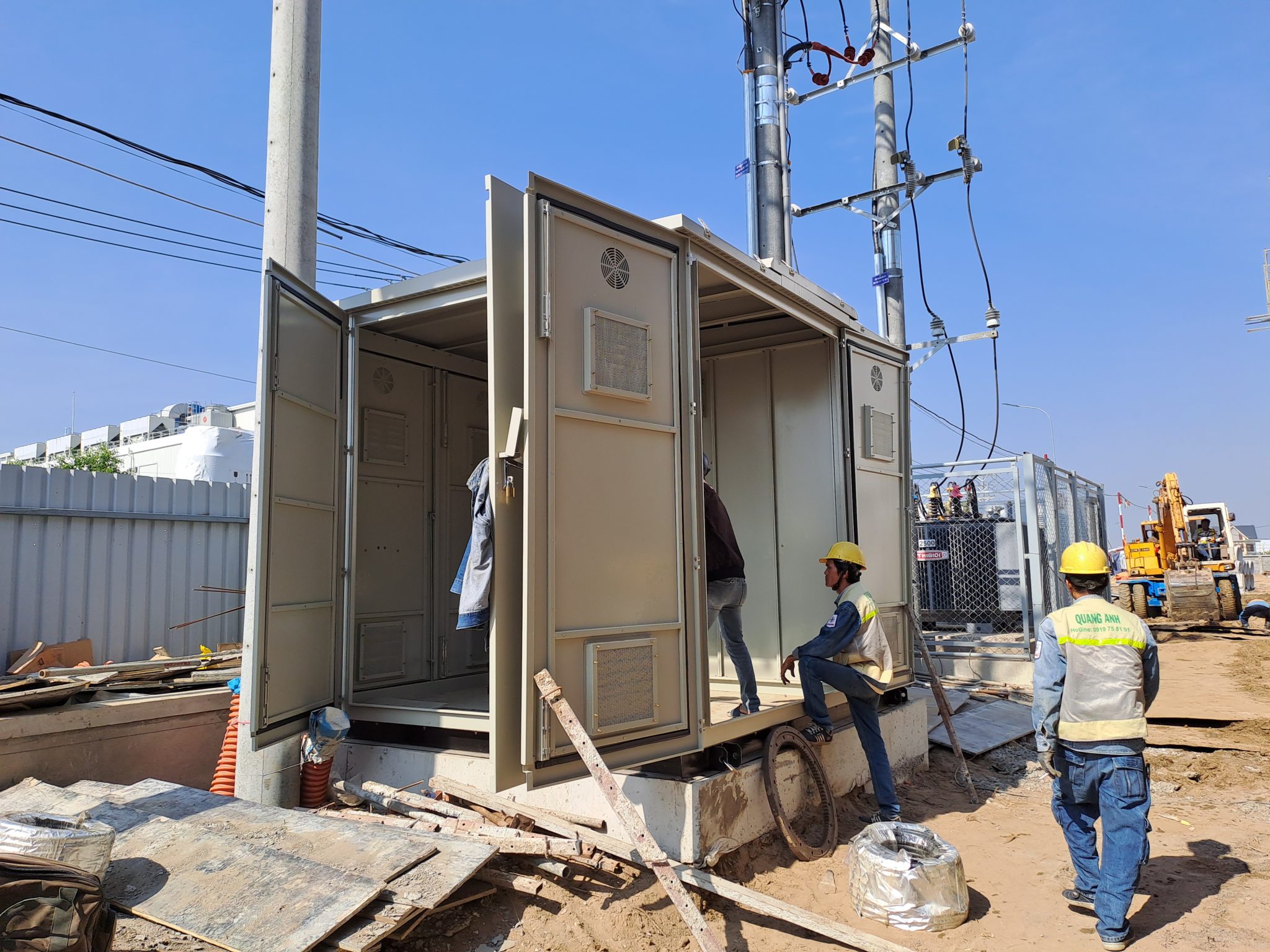
Transmission grid, substations and capacity evacuation constraints.
Dong Nai’s solar plan is closely tied to transmission capability as large projects connect via the Tri An hydropower cluster. Infrastructure upgrades and refurbishments are needed to ensure evacuation, prevent overloads, and reduce congestion risks during peak-sun seasons. Coordinated planning of sources–grid–substations is pivotal to optimize commissioning schedules and readiness for interconnection. With national solar capacity expected to rise through 2030, Dong Nai should prioritize reinforcements at related nodes. By embedding evacuation requirements into design, the plan supports safe operations and sets the platform for scaling Tri An solar in subsequent phases.
Current infrastructure and critical nodes
Dong Nai operates a multi-level grid structure, where evacuation for renewables depends directly on the strength of source–grid–substation links. The current scale includes:
- Medium-voltage grid: 12,000+ km; low-voltage grid: nearly 12,000 km.
- Over 31,000 medium-voltage substations.
- 110 kV grid: 45 substations totaling 4,500+ MVA; 85 lines totaling 1,000+ km.
- 220 kV and 500 kV transmission built in tandem and tightly integrated with the national system; 220/110 kV nodes act as distribution hubs, especially at industrial parks and major urban areas.
Given that loads and distributed sources concentrate at 220/110 kV nodes, optimizing the interface between 220 kV substations and the 110 kV grid is crucial to raise intake for new sources.
Hydropower’s role and seasonal load patterns
Tri An Hydropower is a major regional supplier that stabilizes operations and balances capacity. Hydropower typically feeds the 35 kV grid before stepping up to 110 kV, forming concentration points. In high-sun seasons, industrial loads climb alongside strong solar output, intensifying pressure on 110 kV corridors and tie-lines to 220 kV substations.
Constraints and sunny-season congestion
Rapid solar growth in Dong Nai, Binh Duong and HCMC makes capacity evacuation urgent. Key constraints include:
- Limited hosting capacity in distribution networks (especially MV/LV) under large injections, causing local overloads.
- 110/220 kV substations often run at high loading during sunny months, reducing reserve margins.
- At peak irradiance, lines and substations face overload risks, leading to voltage dips and stability concerns.
Mitigation calls for coordinated technical measures: upsizing transformers, extending lines, flexible power flow control, and deploying SCADA and smart grid solutions at Tri An-related nodes and along the 110 kV network.
Outlook to 2030 under PDP8
PDP8 emphasizes synchronized development of sources–grid–substations to raise intake margins and lower overload risks. During 2025–2030:
- Build 102,900 MVA and refurbish 23,250 MVA of 500 kV substations.
- Construct 12,944 km and upgrade 1,404 km of 500 kV lines.
- Build 105,565 MVA and refurbish 17,509 MVA of 220 kV substations.
- Construct 15,307 km and upgrade 5,483 km of 220 kV lines.
For 2031–2035: develop 26–36 GW of HVDC converter stations and 3,500–6,600 km of HVDC lines, boosting interregional transmission and supporting evacuation from large source clusters.
Priority works in the Southeast
The Southeast—including Dong Nai, Binh Duong and HCMC—should prioritize:
- Dong Nai: new/upgraded 220 kV and 110 kV substations; expansion of 220/110 kV lines; metering–SCADA enhancements for better monitoring and control.
- Binh Duong, HCMC: strengthen 220 kV and 500 kV links; add GIS and underground substations at dense load centers; improve supply reliability.
Harmonizing 220 kV substations, the 110 kV grid, and 500 kV ties will directly improve intake margins and reduce loading at peak nodes.
Related projects and interconnection points
In Dong Nai, notable items include the 220 kV substation for Nhon Trach Industrial Park and its connections, alongside upgrades and expansions of 220 kV and 110 kV lines. Regionwide, the Southeast continues reinforcing 500/220 kV interprovincial links and adding 220 kV substations in dense load pockets to aid evacuation for solar clusters and industrial demand.
System operation and dispatch requirements
NLDC/A0 operates the national system, balancing supply and demand in real time. Advanced control, monitoring, and fault warning technologies strengthen grid responsiveness to rapidly changing renewable output, especially around Tri An hydropower influences and solar concentration points. Combining NLDC/A0 operational data with PDP8 investment plans underpins flexible control strategies that optimize evacuation at 220/110 kV nodes.
Technical approach for the next phase
Integrate the following measures in design and execution:
- Optimize the 110 kV grid: regional load sharing, reduce power flow concentration at single nodes; reinforce looped connections and install appropriate control devices.
- Upgrade 220/110 kV substations: expand bays, increase transformer MVA ratings, adopt GIS and unattended substations as site conditions allow.
- Expand 220/500 kV transmission corridors across regions: secure flexible flow paths from the Southeast to neighboring areas.
- Advance digital operations: SCADA, online monitoring, and real-time overload alerts to proactively evacuate capacity during sudden solar surges.
This approach leverages Tri An Hydropower’s balancing role while creating headroom for new projects to interconnect safely to 220 kV substations and the 110 kV grid, consistent with PDP8.

Mechanisms: auctions, FIT, renewable DPPA; land-use and environmental planning.
Dong Nai’s solar plan operates as pricing shifts from historic FITs to open auctions, encouraging cost optimization and investment efficiency. For non-rooftop projects, self-generation/self-consumption is being prioritized; in parallel, renewable DPPA is promoted to give industrial customers transaction flexibility, though local guidance remains in pilot and refinement stages. On the legal side, the 2021–2030 land-use plan necessitates rechecking project conformity, while the province prioritizes suitable land banks and minimized environmental impacts. Policy coherence will help align Dong Nai’s solar plan with Southern clean energy expansion over the coming years.
From historic FITs to competitive auctions
- FIT legal basis: Decisions 11/2017/QD-TTg, 13/2020/QD-TTg and 23/2021/QD-TTg established solar FITs and wind FITs as fixed purchase prices with typical 20-year PPAs.
- End dates: Solar FITs ended in late 2020; wind FITs in late 2021.
- System impact: Strong investment inflows but grid overloads emerged, highlighting the need for greater transparency in investor selection.
Transition to competitive auctions
- Legal foundation: Electricity Law 2020, Decrees 56/2025/ND-CP and 58/2025/ND-CP, and PDP8 orient the shift to open auctions.
- Scope: Applies to new large-scale solar auctions and wind projects; not applicable to projects with approvals granted before the transition.
- Process & criteria: Two-envelope procedures (RFQ/RFP) to assess capability and price; winning bids must not exceed MOIT-announced caps consistent with the generation price framework.
DPPA for industrial customers
- Legal basis: Electricity Law 2020 and Decree 57/2025/ND-CP permit direct power transactions between renewable generators and large customers.
- Trading model: Vietnam DPPA enables direct PPAs without going through EVN.
- Core steps: Registration, licensing, contracting, and grid interconnection.
- Cost accounting: Excess power purchase costs are allocated into EVN’s wholesale/retail tariffs per regulations.
- Value: Greater flexibility, reduced reliance on traditional purchases, and accelerated local renewable development.
Self-generation/self-consumption and priority for non-rooftop projects
- Legal frame: Electricity Law 2020 and Decree 58/2025/ND-CP provide guidance for rooftop solar.
- Operating principle: Rooftop PV serves self-generation and self-consumption; surplus may be sold to EVN or through DPPA.
- Planning priority: Non-rooftop projects (on land or water) are prioritized in planning and auctions under current rules.
- Key condition: Projects must obtain investment policy approval before 01/01/2031 and fall within the 6,000 MW PDP8 allocation.
- Limitation: Any excess capacity or approvals after the cut-off follow prevailing laws.
Land-use planning and EIA for 2021–2030
- Land-use conformity: Under the Land Laws 2013/2024 and PDP8, projects must align with 2021–2030 land-use plans at provincial/district levels; avoid protected areas, residential zones, and heritage sites.
- Legal procedures: Projects require permitting and compliance for land-use conversion for renewables.
- Environmental impact assessment (EIA): Under the Environmental Protection Law 2020, EIAs must evaluate environmental–social impacts, propose mitigation, and commit to protection measures; approvals rest with provincial environmental authorities.
Context in Dong Nai and the South
Dong Nai
- Development orientation: Among provinces prioritized for renewable development (solar and wind) under PDP8.
- Land bank: Extensive industrial parks and available land suitable for non-rooftop projects, allowing integration with self-generation and self-consumption models.
- Environment and procedures: Strict EIA requirements, especially near residential/protected areas; the province offers clear guidance on permitting, interconnection, and renewable investment incentives.
The Southern region
- Resource potential: Strong solar and wind potential, especially along the coast and industrial clusters.
- Planning alignment: Many provinces have updated land and power plans under PDP8, creating a base for solar auctions and expanding the Vietnam DPPA.
- Implementation & challenges: Numerous projects are proceeding under auctions, DPPA, and self-generation/self-consumption models; however, grid overload persists, requiring infrastructure upgrades and agency coordination.
Adhering to auction, DPPA, land-use and EIA frameworks—while optimizing project configurations with a focus on non-rooftop sites—will help investors and industrial customers leverage this transition phase effectively in Dong Nai and across the South.
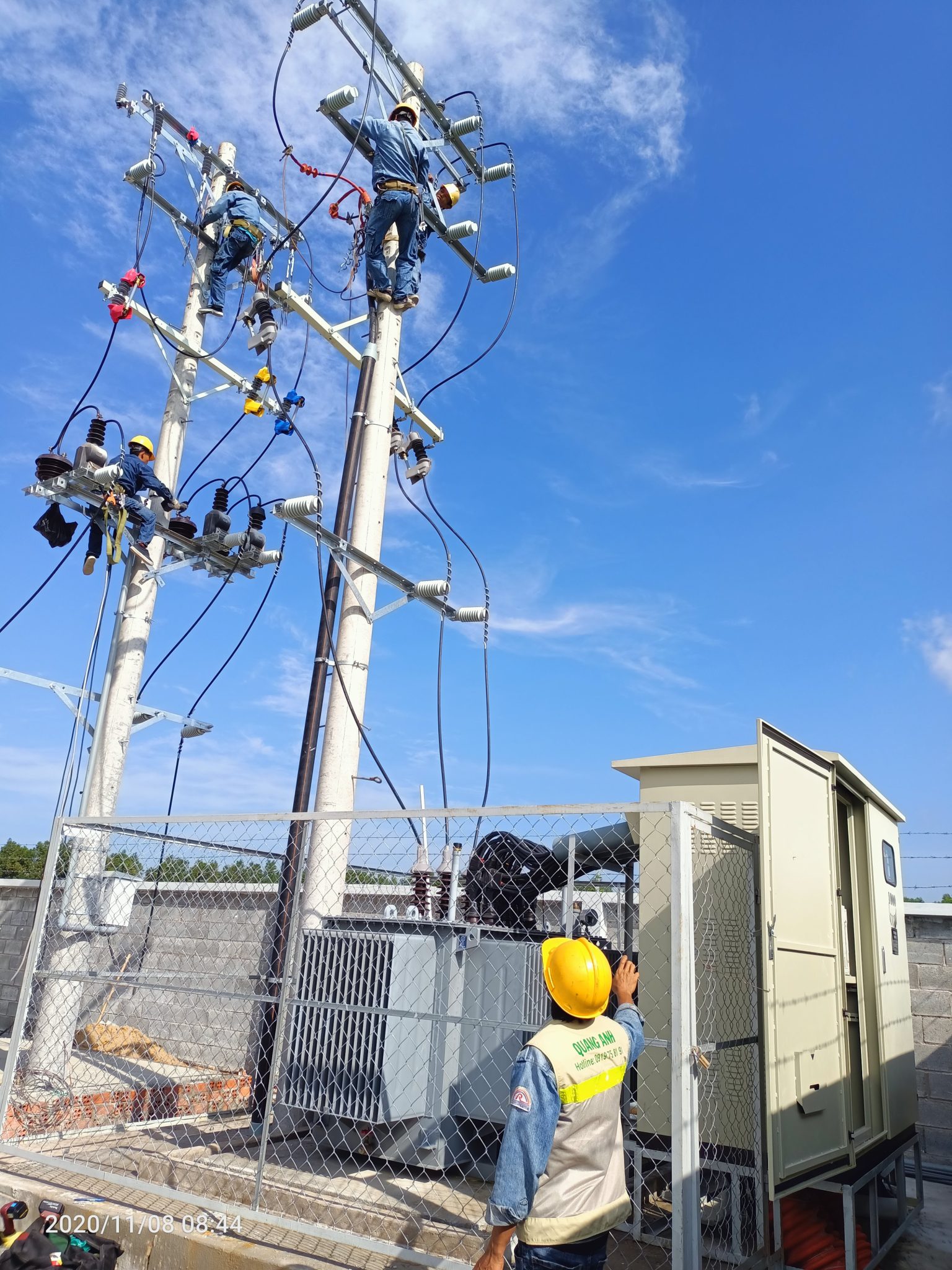
Dong Nai’s solar plan indicates room to expand thanks to the two Tri An projects (1,029 MW), strong irradiation, and flexible mechanisms. Prioritizing grid upgrades for evacuation, resolving land bottlenecks, and advancing DPPA will strengthen technical and investment certainty, supporting the Southern clean energy goals for 2023–2025 and beyond.
Need to update your plan according to Dong Nai’s solar roadmap and the DPPA mechanism? Contact QuangAnhcons – Hotline: +84 9 1975 8191.
Based on the research content, this article by QuangAnhcons provides planning, mechanism, and technical-constraint information related to solar in Dong Nai for 2023–2025. It does not detail services; please call the Hotline for information aligned with current planning scope and policies.

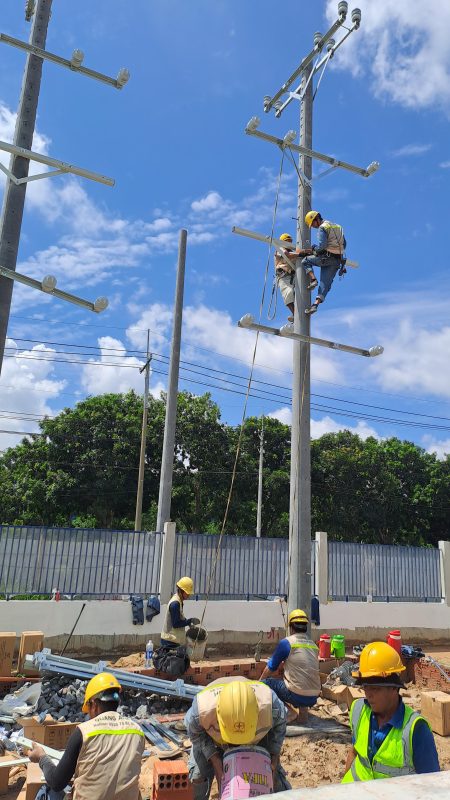
Related Posts
Dong Nai Solar Power Plan 2023–2025: Tri An 1,029 MW, Grid Upgrades and the DPPA Pathway
A complete look at Dong Nai’s solar power plan: Tri An 1,029 MW, irradiation potential, [...]
Nov
Quang Ngai Solar Power Plan 2024–2030: Legal Framework, Irradiance Potential, and Development Roadmap
A complete look at Quang Ngai’s solar power plan: capacity targets, irradiance (PVout), development zones, [...]
Nov
Solar Damage Assessment Services: On-Site Procedures, EL/IV/Thermography Testing & Compliance with Standards
Discover IEC/UL/NEC standard solar damage assessment processes: on-site evaluation, EL and IV curve testing, thermal [...]
Nov
Comprehensive Package Estimate for a 1800MVA 500kV Substation: Scope, Configuration 3x600MVA, Standards and Timeline Management
An overview of the 1800MVA 500kV substation estimate: construction scope, configuration 3x600MVA, GIS/AIS, SCADA, standards, [...]
Nov
Factory Electrical Systems: Comprehensive Design and Implementation Guide
Discover the detailed and safe process of factory electrical systems design and implementation. [...]
Oct
Blueprints Required for Factory Construction Permits
Discover the necessary blueprints in factory construction permit applications, from floor plans to electrical and [...]
Oct
What Are the Requirements for a Factory Construction Permit? A Comprehensive Guide
Explore the documentation and steps needed to secure a factory construction permit for streamlined project [...]
Oct
Factory Construction Permit Procedures in Vietnam: Essential Guidelines and Documents
Learn the procedures for securing a factory construction permit in Vietnam, focusing on document preparation [...]
Oct
Key Steps in the Factory Construction Process
Discover the essential steps and requirements for building factories. [...]
Oct
Comprehensive Electrical Substation Solutions by Quanganhcons
Discover the cutting-edge electrical substation solutions offered by Quanganhcons for industrial applications. [...]
Oct
Investment Costs for a 1MWp Solar Power System and Influencing Factors
Explore the investment costs for a 1MWp solar power system in Vietnam and the influencing [...]
Sep
QuangAnhcons: Elevating Wind Energy Solutions
Explore QuangAnhcons' leadership in wind energy and renewable solutions in Vietnam. [...]
Sep
Electrical Contractor Strategies at Becamex Industrial Park
Discover the strategic advancements and partnerships of the electrical contractor at Becamex Industrial Park. [...]
Sep
Investment Insights for 1MW Wind Energy in Vietnam: Costs and Opportunities
Discover the detailed analysis of costs and opportunities for investing in 1MW wind energy projects [...]
Sep
Advanced Electrical Installation Solutions by QuangAnhcons
Explore advanced electrical installation solutions and modern technology with QuangAnhcons. [...]
Sep
Enhancing Industrial Electrical Services with Quanganhcons
Discover Quanganhcons' expertise in industrial electrical services, offering efficient and sustainable power systems. [...]
Sep
Comprehensive MEP Solutions by QuangAnhcons: From Design to Maintenance Excellence
Discover optimal MEP solutions with QuangAnhcons, dedicated to excellence from design through maintenance. [...]
Sep
Comprehensive Electromechanical Contracting Solutions by QuangAnhcons
Explore QuangAnhcons' comprehensive services for efficient and safe energy system solutions. [...]
Sep
QuangAnhcons: Empowering Industrial Energy Solutions
Discover how QuangAnhcons delivers optimal industrial EPC solutions. [...]
Sep
Effective Industrial Construction Management and Execution
Optimize your industrial projects from design to execution with our contractor services. [...]
Sep